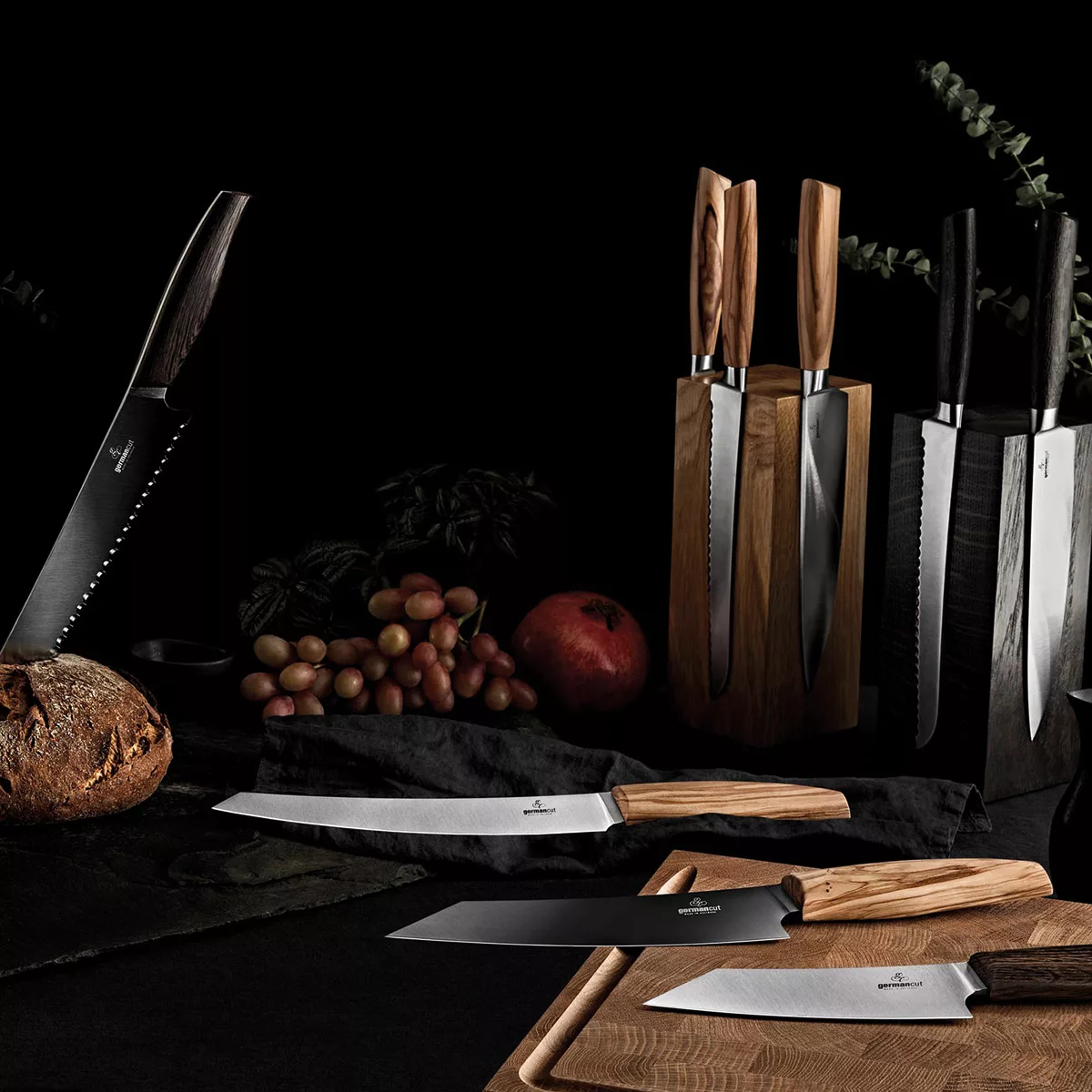
The most important knives and their
special features at a glance
Bread knives, paring knives, carving knives – there are many kitchen knives. But what functions and properties do the different blade shapes and sizes have?
We help you to keep an overview in your kitchen and show you the most important kitchen knives and what you should know about them.
The classic Chef’s Knife
Before we take a look at the different variations of the kitchen knife, we would first like to introduce you to the all-rounder among knives.
With a length of approx. 15 – 25 cm, the sharp and smooth blade of a classic chef’s knife is perfect for clean cuts through all kinds of food, chopping it up but not crushing or damaging it. Whether meat, vegetables or fish – the chef’s knife glides easily through all foods to be processed.
Our MEATLOVER is also a true all-rounder and can be used to prepare many other foods in addition to meat. This makes the MEATLOVER chef’s knife a perfect all-rounder that is ideal as an entry-level model.
The Filleting Knife
The filleting knife is designed for very delicate cuts and particularly accurate work. With its long and narrow blade, it not only sits comfortably in the hand, but also looks elegant.
With a length of 23 cm, the blade of our CHEFSLOVER filleting knife, for example, is ideal for paring and filleting fish, meat or other delicate foods. The blade glides through the meat without tearing or crushing it.
The Vegetable Knife
Compared to other knives, the blade of a paring knife is rather short with a length of 10 – 20 cm. This means that vegetables of all sizes – from pumpkins to shallots – can be chopped with particular precision and control.
For vegan or vegetarian dishes, but also for side dishes, a knife like this (such as our VEGGIELOVER vegetable knife) is an absolute must-have.
The Office Knife
The name of this knife may be misleading: The office knife is not a knife designed for mobile use – for example in the office. This is because “office” is not the English term for “office”, but the French term for sculleries in manor houses, where fruit and vegetables were washed, peeled and prepared for the chef – and this is exactly what the knife is still used for today.
Nowadays, the office knife is more commonly known as a “paring knife” or PARINGLOVER. With its particularly short but sharp blade, the knife is ideal for peeling, finely slicing or preparing fruit and vegetables.
Due to its versatility and flexibility, it is also known as “the little all-rounder”.
The Bread Knife
The bread knife stands out from the crowd with its 20 – 30 cm long blade and coarse serrated edge. It can be used to cut pasta without negatively affecting its texture.
In particular, bread knives with a serrated edge on both sides – such as our BREADLOVER bread knife – cut easily through any loaf, from white bread to pumpernickel, and ensure straight and precise cuts without slipping in one direction. They are also perfect for left- and right-handed users.
Knives from Germancut: Large selection and great quality
Our fine kitchen knives are not only ideal for personal use, but also make perfect gifts for gourmets and amateur chefs.
Have we whetted your appetite? Then take a look at the Germancut online store. Expand your collection and see for yourself our high-quality knives made in Solingen – Germany’s city of blades.
